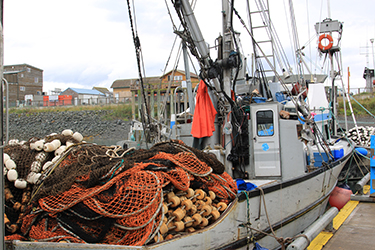Coronavirus strains preparations for 2020 sockeye season in Bristol Bay, Alaska

Alaska issued a mandate late on Monday, 24 March, qualifying the state’s commercial fishing industry as “critical infrastructure,” a move that frees up the Bristol Bay fishery to move forward with preparations for the 2020 season.
But uncertainty looms as the world’s largest sockeye salmon fishery discusses how it might bring nearly 12,000 non-resident workers into remote western Alaska amid the coronavirus outbreak.
Bristol Bay Economic Development Corporation President and CEO Norm Van Vactor is among those working with the state of Alaska, native representatives, processors, and fishermen to make contingency plans.
“We’re an optimistic and resilient group, and I like to think we’re going to find a way. Thank goodness we have 45 days and it’s not tomorrow, but the other thing is that we have to start making some of these decisions tomorrow, so we’re in a position to operate in 45 days,” Van Vactor told SeafoodSource.
For now, the state has mandated that fishermen traveling to the Bristol Bay region self-quarantine for 14 days at their final destination, and keep their distance from the local population.
“If you travel to Bristol Bay prior to 1 May, 2020, you should still abide by the 14-day self-quarantine directive by restricting your movements (and your crew’s) to your vessel, setnet site, fleet office (if needed), and boatyard. Every attempt to submit gear store orders via telephone and arranging for delivery should be made to avoid having contact with the community, such as gear or grocery stores,” read a recent news bulletin from the Bristol Bay Regional Development Association (BBRSDA).
The fishing season typically starts mid-June, but fishermen often make spring trips to prepare their boats and gear.
Workers fly into airports in the towns of Dillingham and King Salmon, and it is unclear if local city governments have the authority to override the state and shut down travel, or whether they would exercise that authority. Meanwhile, a handful of remote native townships accessed by small aircraft have already banned travel in and out villages.
Lack of healthcare infrastructure across the Bristol Bay region is a major concern.
“We don’t feel like we have medical facilities to respond to our current population base, to say nothing of the thousands of folks that potentially will be coming in,” Van Vactor said.
The specter of the Spanish flu also hangs over the area. Historian Katie Ringsmuth explained that the pandemic killed much of the adult population in several fishing Bristol Bay villages in the summers of 1918 and 1919, leaving a generation of orphans.
“I think people are really, really scared right now. The fishery is so global. It’s bringing people from all over the world and that’s terrifying. But at the same time, people are terrified the fishery won’t happen and they won’t be able to make a living,” Ringsmuth said.
According to figures from the state of Alaska, Bristol Bay brought in 5,471 processing workers in 2017 – nearly 90 percent of them non-resident, and many of those employees international laborers as well. On top of that, figures from the McDowell Group estimate the Bristol Bay fishing fleet has around 6,400 non-resident workers. The economically depressed region depends on the fishery, which accounts for around 42 percent of the world’s sockeye salmon harvest and has generated USD 758 million (EUR 684 million) annually in past years, according to the McDowell Group.
BBRSDA held a town hall via Zoom on Wednesday, 25 March, that saw over 600 fishermen and others associated with the industry tune in, clamoring for news about how the coronavirus might affect the fishery. While BBRSDA officials said they are doing all they can to prepare, a more pressing discussion took place on the comment chain. Many questioned whether the fishing season should go on at all, while others staunchly insisted fishing must take place.
Commenters cited the impact of the Spanish flu in Bristol Bay, while others highlighted the difficulties of proper sanitation and social distancing on boats and in processing facilities.
“The reality is that these processing facilities are not the place to have social distancing. You have bunkhouses and mess halls where you’re working shoulder-to-shoulder with other people. And then the fleet, you’ve got two or three or four people living in the forecastle of a 32-foot boat,” Van Vactor said.
Van Vactor added that any local testing for COVID-19 would be a challenge. Alaska only has two labs, and swabs would likely need to be flown to Fairbanks, which is 530 miles from Dillingham.
“Huge questions. But everyone is taking this extremely seriously, and I am very confident that industry is going to be able to put together a collective methodology,” Van Vactor said.
While other salmon runs have lagged statewide in Alaska, Bristol Bay has seen five straight seasons with 50 million returning sockeye salmon – well over the fishery’s long-term mean of around 33 million fish. Last season was the most lucrative in history, with an ex-vessel value of USD 306.5 million (EUR 276.6 million), more than doubling the 20-year average of USD 124 million (EUR 111 million), according to the Alaska Department of Fish and Game.
Photo courtesy of ron99/Shutterstock





Share